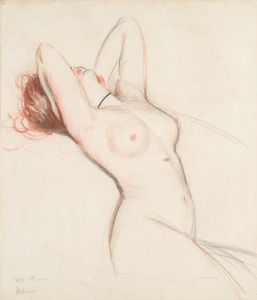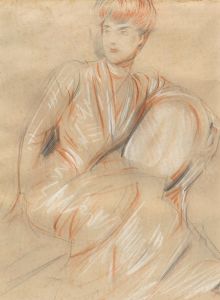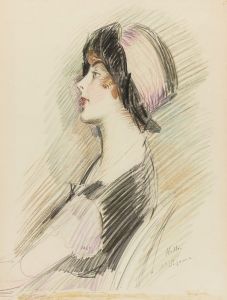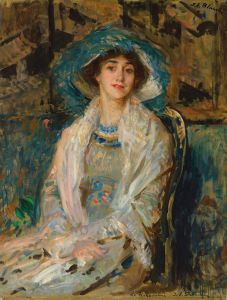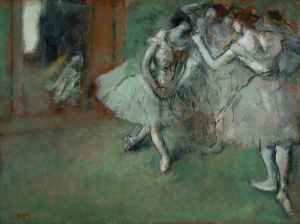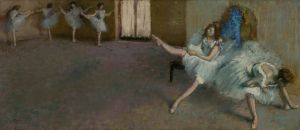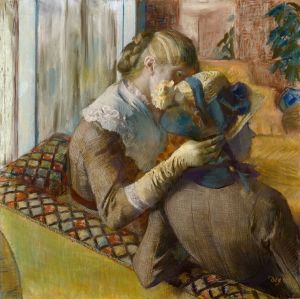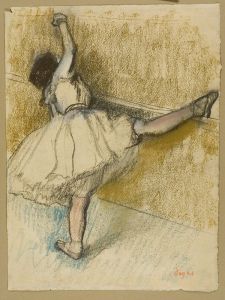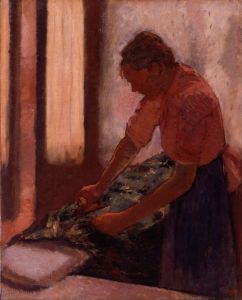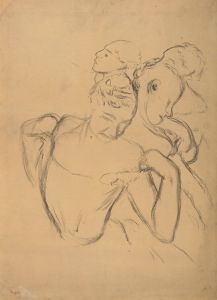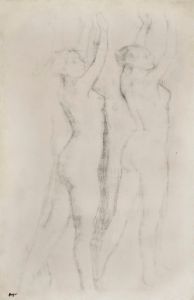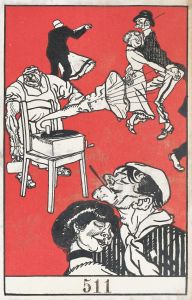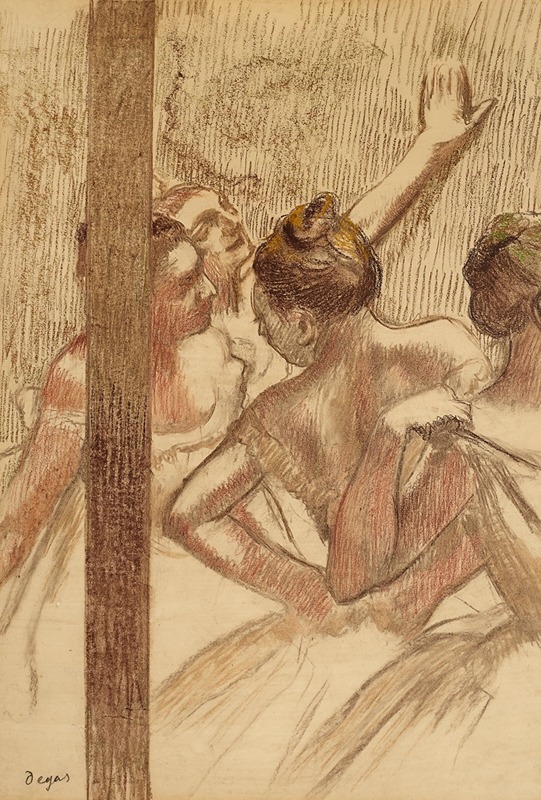
Danseuses
A hand-painted replica of Edgar Degas’s masterpiece Danseuses, meticulously crafted by professional artists to capture the true essence of the original. Each piece is created with museum-quality canvas and rare mineral pigments, carefully painted by experienced artists with delicate brushstrokes and rich, layered colors to perfectly recreate the texture of the original artwork. Unlike machine-printed reproductions, this hand-painted version brings the painting to life, infused with the artist’s emotions and skill in every stroke. Whether for personal collection or home decoration, it instantly elevates the artistic atmosphere of any space.
Edgar Degas, a prominent French artist associated with the Impressionist movement, is renowned for his depictions of dancers, particularly ballet dancers. One of his notable works, Danseuses (translated as Dancers), exemplifies his fascination with capturing the grace, movement, and behind-the-scenes moments of the ballet world. Degas created numerous paintings, pastels, and sketches of dancers throughout his career, and Danseuses is one of the many pieces that highlight his mastery of form, color, and composition.
Danseuses portrays a group of ballet dancers, either rehearsing or preparing for a performance. Degas often sought to depict dancers in candid, unposed moments, offering a glimpse into their physical exertion and dedication. This approach set him apart from other artists of his time, as he focused not only on the elegance of performance but also on the labor and discipline required in the art of dance. The painting reflects his keen observational skills and his ability to convey movement and atmosphere.
Degas frequently used pastels in his works, and Danseuses is no exception. Pastels allowed him to achieve a soft yet vibrant effect, capturing the delicate textures of the dancers' costumes and the play of light on their figures. The medium also enabled him to layer colors and create a sense of depth and dynamism. His use of color in Danseuses is particularly striking, with subtle contrasts that bring the dancers to life while maintaining a harmonious overall composition.
The setting of Danseuses is typical of Degas' works, often depicting rehearsal rooms, backstage areas, or other intimate spaces rather than grand stages. This choice reflects his interest in the everyday realities of the dancers' lives, rather than the idealized glamour of performance. The painting's composition often features cropped figures and unconventional angles, influenced by Degas' interest in photography and Japanese prints, which were popular in 19th-century France.
Degas' focus on dancers was not merely an artistic preference but also a reflection of his broader interest in human movement and anatomy. He conducted extensive studies of the human form, often sketching and observing his subjects in various poses. This dedication to understanding movement is evident in Danseuses, where the figures are rendered with a sense of fluidity and naturalism.
While the exact date of creation for Danseuses may vary depending on the specific work being referenced (as Degas created numerous pieces with similar themes and titles), it is generally associated with his mature period in the late 19th century. During this time, Degas increasingly relied on pastels and experimented with innovative techniques to achieve his artistic vision.
Today, Danseuses and other works by Degas remain celebrated for their unique perspective on the world of ballet and their contribution to the Impressionist movement. His ability to capture both the beauty and the reality of dance has made him one of the most influential artists of his time.





